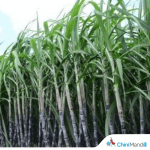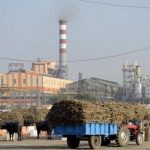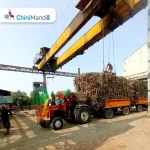New Delhi: As the demand for sustainable aviation fuel (SAF) skyrockets, global production is projected to surge by 98 per cent in 2024, reaching 1.95 million metric tons, according to forecasts by S&P Global Commodity Insights.
According to S&P Global Commodity Insights, while Europe retains the lion’s share, accounting for over half of the production, the growth trajectory depends on policy frameworks.
The expected growth rate of 98 per cent in 2024 represents a slowdown from the remarkable 174 per cent year-on-year increase witnessed in 2023. Looking ahead, the forecast indicates an 81 per cent rise from 2024 to 2025.
In 2024, Europe is anticipated to produce 53 per cent of the global SAF output, with the Americas contributing 23 per cent, and Asia and the rest of the world making up the remaining 24 per cent.
Europe faces significant regulatory targets under the European Union’s Fit for 55 program, necessitating increased SAF uptake.
Despite Europe’s dominance in SAF production, its growth rate is expected to lag behind the global figure, emphasizing the critical role of policy design in sustaining expansion.
Europe’s SAF production is set to be 29 per cent higher in 2024 compared to the previous year, reaching 1.04 million metric tons and rising to 1.6 million metric tons in 2025.
Key mandates under the EU regulation include SAF constituting at least 2 per cent of aviation fuel by 2025, increasing to 6 per cent by 2030, 20 per cent by 2035, 34 per cent by 2040, 42 per cent by 2045, and a substantial 70 per cent by 2050.
Additionally, synthetic fuels are targeted to constitute 35 per cent of the fuel mix by 2050.
Seb Lewis, Associate Director of Agribusiness Consulting at S&P Global Commodity Insights, highlights the importance of policy design as mandates become more demanding.
Lewis said, “The 2 per cent target is modest and it should be possible to meet that with mature HEFA SAF made from waste oils and fats feedstocks. As the mandates get more demanding the design of policy will become more important. Any policy support will need to be high enough to incentivise the production of SAF over renewable diesel, which currently receives double credits in some European countries”.
The sustainability of SAF production pathways, particularly Hydrotreated Esters and Fatty Acids (HEFA), raises concerns, prompting the need for alternative feedstocks and production technologies.
While HEFA remains the predominant process, questions about the sustainability and availability of feedstocks, especially with competing demand, drive the exploration of new SAF production pathways.
The UK’s plan to introduce a SAF mandate in 2025, coupled with a cap on HEFA-based SAF, signals the imperative to diversify production methods.
Jamie Dorner, Biofuels Analyst at S&P Global, notes that significant increases in SAF production in North America are expected post-2024.
The United States aims to meet ambitious production targets of 3 billion gallons by 2030 and 35 billion gallons by 2050, emphasizing the importance of ramping up SAF capacity.
Despite the substantial growth in SAF production, it is poised to remain a small share of aviation fuel.
The International Air Transport Association (IATA) indicates that SAF output in 2024 will constitute only 0.53 per cent of aviation’s fuel requirements and 6 per cent of renewable fuel capacity.
Governments play a crucial role in formulating policies to guarantee supply and drive further growth in SAF adoption.
SAF prices, assessed by Platts, have maintained an average premium to Northwest Europe (NWE) CIF Jet cargoes, underlining the economic viability and market dynamics supporting sustainable aviation fuel.
As the aviation industry sets its sights on reducing carbon intensity, achieving global SAF production targets by 2030 becomes paramount, with approximately 14 million metric tons of SAF needed to make fuels 5 per cent less carbon-intensive.
The recent Conference on Aviation Alternative Fuels (CAAF/3) established a global framework to promote SAF production, aligning with the industry’s commitment to sustainable and environmentally friendly aviation practices.
India is also working to boost the SAF production in country along with ethanol.













